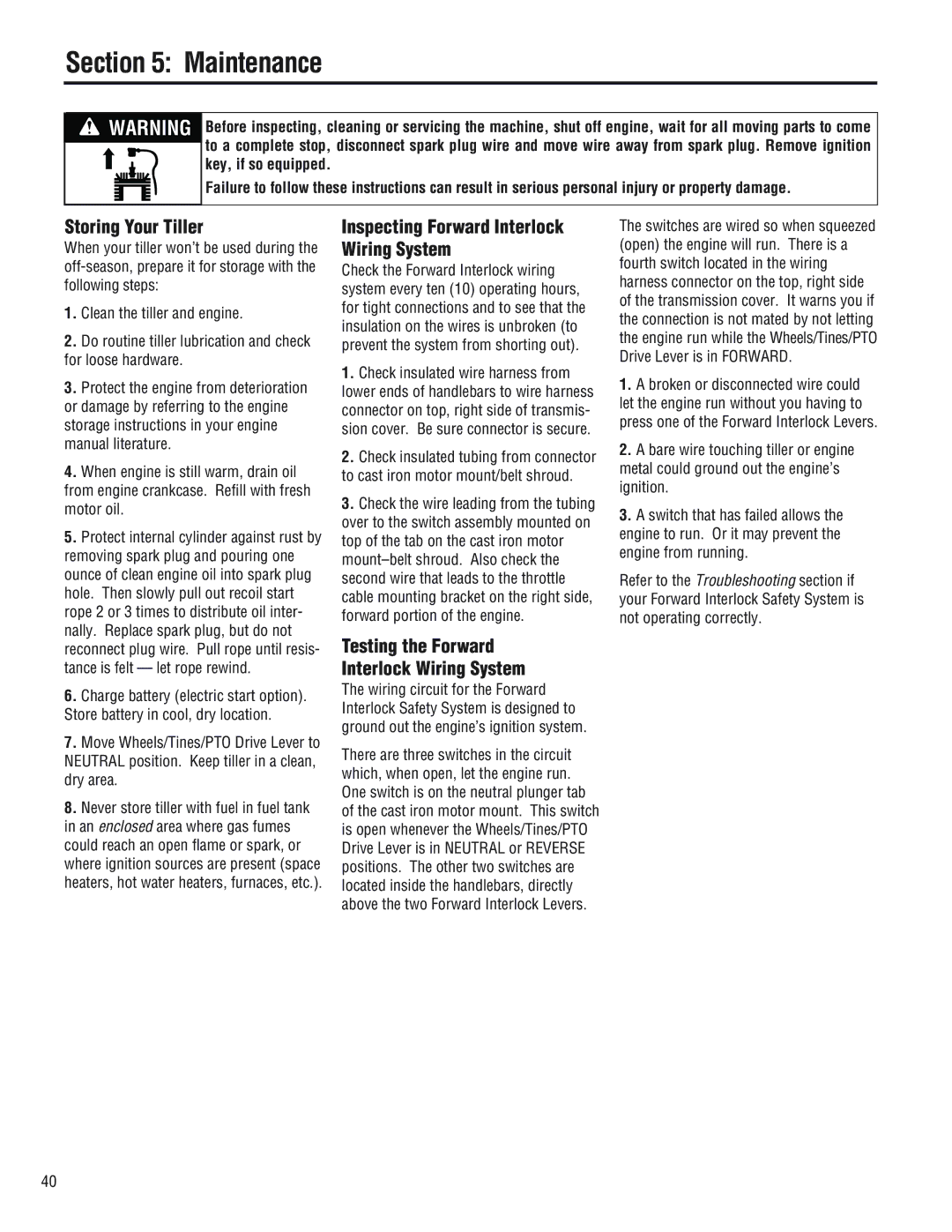682J, E686N, E682L specifications
The Troy-Bilt brand is widely recognized for its reliable outdoor power equipment, including a line of innovative lawn tractors. Among these, the Troy-Bilt 682J, E686N, and E682L stand out for their exceptional performance and user-friendly features, catering to various lawn care needs.The Troy-Bilt 682J is a robust lawn tractor designed for efficiency and ease of use. Its 19 HP engine provides ample power for handling various landscaping tasks, while the 42-inch cutting deck allows for a wide cutting path, making quick work of mowing larger yards. The tractor boasts a six-speed transmission, enabling users to select the speed that best suits their mowing conditions. Additionally, the 682J features an ergonomic seat and steering for comfort during extended use, making it a solid choice for homeowners with medium to large properties.
The Troy-Bilt E686N takes things a step further with its advanced technology. This model integrates a 20 HP engine and a larger 46-inch cutting deck, enhancing productivity significantly. The E686N is equipped with a hydrostatic transmission, offering smooth operation and easier control, allowing users to maneuver around obstacles with precision. One of its standout features is the Easy Change Oil Kit, which simplifies maintenance, ensuring that the engine runs smoothly for longer periods. The inclusion of a washout port on the deck makes cleaning effortless, promoting better lawn health and equipment longevity.
For those seeking a more compact option, the Troy-Bilt E682L delivers reliable performance in a smaller package. This model features a 19 HP engine paired with a 38-inch cutting deck, perfect for navigating tighter spaces without compromising power. Its tight turning radius enhances maneuverability, making it ideal for suburban lawns with landscaping features and garden beds. The E682L is designed with user comfort in mind, featuring an adjustable seat and simple controls for intuitive operation.
In summary, the Troy-Bilt 682J, E686N, and E682L represent a dynamic trio of lawn tractors, each catering to various homeowner needs. With powerful engines, efficient cutting decks, and user-friendly features, these models are built to enhance the mowing experience. With their proven reliability and advanced technologies, Troy-Bilt tractors make maintaining a beautiful lawn a manageable task for anyone.

